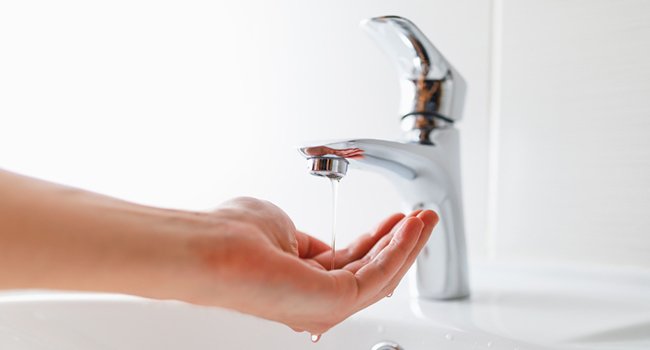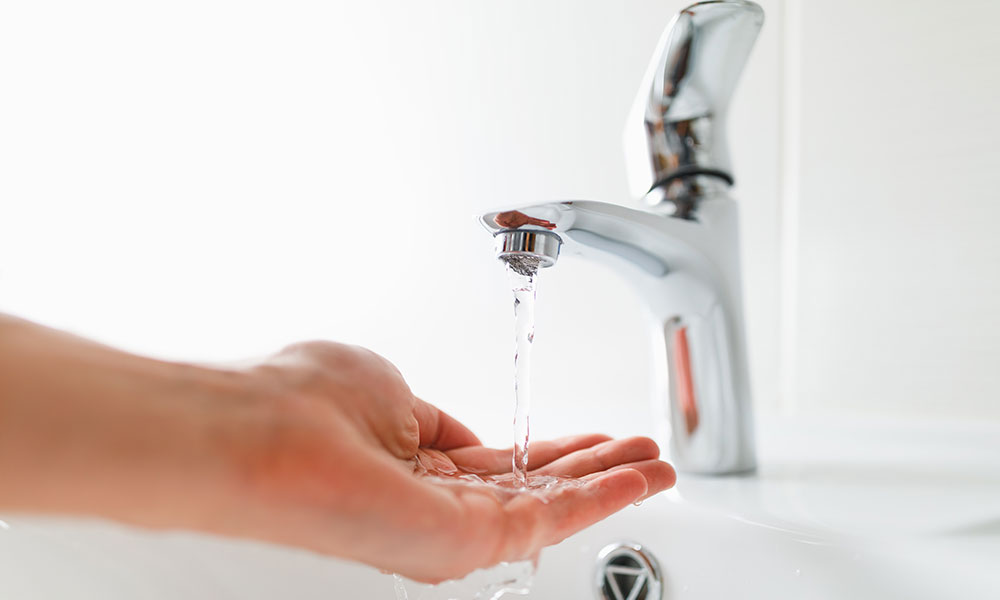Just how do you feel in relation to Low Water Pressure in the House??

Low water stress in your house can be a frustrating trouble, influencing every little thing from showering to washing recipes. If you're experiencing weak water flow, there are numerous possible reasons and options to discover. In this overview, we'll go over typical factors for low water stress and useful steps to deal with the problem successfully.
Introduction to Low Tide Pressure
Low water stress takes place when the flow of water from your faucets, showers, and other components is weak than common. This can make daily tasks extra tough and much less reliable. Understanding the root causes of low water stress is vital to finding the right remedy.
Common Sources Of Low Tide Pressure
Faulty Stress Regulators
Stress regulatory authorities are in charge of keeping constant water pressure in your house. If they malfunction, it can result in low water pressure or unequal flow throughout your house.
Local Supply Of Water Issues
Occasionally, the problem exists outside your home. Municipal water concerns, such as main line leaks or upkeep job, can briefly lower water pressure in your area.
Pipeline Obstructions
With time, pipelines can end up being blocked with natural resource, debris, or debris, limiting the circulation of water. This is an usual issue in older homes with galvanized steel pipes.
Corrosion
Rust within pipes can bring about leaks and reduced water stress. Corrosion build-up can tighten water circulation, especially in aging plumbing systems.
Just How to Detect Low Water Pressure
Checking Pipes
Inspect noticeable pipelines for indicators of leakages, deterioration, or clogs. Pay attention to any type of uncommon noises, such as knocking or rattling pipes, which might show problems within the plumbing system.
Consulting with a Plumber
If you're unable to pinpoint the cause of low tide pressure, take into consideration working with an expert plumber to perform an extensive assessment. They can recognize underlying issues and advise appropriate services.
Examining Faucets and Components
Beginning by checking the water pressure at various faucets and fixtures throughout your home. If the concern is isolated to specific locations, it might show localized problems.
Do It Yourself Solutions to Repair Low Water Stress
Flushing Hot Water Heater
Sediment accumulation in the hot water heater can restrict circulation and lower performance. Purging the container regularly aids remove sediment and keep optimal performance.
Checking Pressure Regulator
Ensure that the stress regulator is working appropriately. Adjusting or changing the regulatory authority can assist recover correct water stress throughout your home.
Cleaning Aerators and Showerheads
Mineral deposits can accumulate in aerators and showerheads, minimizing water circulation. Remove and clean up these components frequently to enhance water pressure.
Clearing Clogs in Pipes
For small clogs, attempt utilizing a plumbing snake or chemical drainpipe cleaner to clear blockages in pipelines. Be cautious when using chemicals and follow security standards.
When to Call a Specialist Plumber
If DIY efforts fail to deal with the problem or if you suspect substantial plumbing problems, it's ideal to seek aid from an accredited plumber. They have the proficiency and tools to attend to complicated issues safely and effectively.
Safety Nets to Preserve Water Pressure
Setting Up a Pressure Booster
Consider setting up a pressure booster pump to boost water stress in areas with consistently low flow. This can be specifically beneficial for multi-story homes or residential properties with high-demand components.
Surveillance Water Usage
Be mindful of water use practices and avoid ill-using the plumbing system. Simple modifications, such as shocking showers and laundry tons, can assist keep appropriate water stress.
Normal Upkeep
Set up regular maintenance for your plumbing system to prevent concerns such as deterioration, leakages, and clogs. Dealing with minor problems early can assist avoid even more considerable fixings later on.
Conclusion
Handling low tide stress can be frustrating, however determining the underlying reasons and implementing proper services can bring back optimal circulation throughout your home. Whether it's cleaning aerators, examining pipelines, or speaking with a plumber, taking proactive actions can make sure a steady supply of water for your daily demands.
9 Solutions to Low Water Pressure
If you have ever struggled to rinse the shampoo out of your hair, washed your hands under a trickle of water, or been forced to wait for your washing machine to complete a cycle, then you have experienced the nuisance of low water pressure. Low water pressure can turn a simple task into a hassle, but once you identify the cause, either the necessary plumbing fix or a water booster pump can drastically improve your water pressure. In this article, you can learn about nine common causes of low water pressure and how to resolve low water pressure in your home.
How do you know if you have low water pressure?
Testing your home’s water with a pressure gauge is the easiest way to find out if you have low water pressure. Pressure gauges are simple and inexpensive, and once installed, will allow you to check your water pressure with a quick glance.
If your water is from a municipal water supply, select an outdoor faucet near where the main water line enters your home. If your water is from a well, select a faucet that is close to the well’s pressure tank. Attach the pressure gauge to the faucet and tighten it. To get an accurate reading, make sure water isn’t being used anywhere else inside or outside the house, and then fully turn the faucet on. Once the faucet is on, you can read the water pressure on the gauge’s dial. Typical home water pressure should be between 40 and 50 psi, so if the dial reads less than 40 psi, you have low water pressure.
Do water booster pumps increase water pressure?
A water booster pump is a centrifugal pump that improves low water pressure and increases water flow. Much like how a fan’s blades create a gust of air, a water booster pump’s rotating impeller draws water in and then pushes it out with increased force. This force raises the water pressure in a system. A water booster pump is installed where the main water line enters your home, so water pressure is improved in every tap and appliance.
What causes low water pressure?
1. Hard water
If you have hard water, scale can accumulate in your pipes, restrict the water flow, and reduce your water pressure. Hard water has a high mineral content, specifically calcium and magnesium, and scale is formed when these mineral salts dissolve.
The solution: When scale buildup is severe enough to restrict water flow and reduce water pressure, the best solution is to replace your pipes. Products like CLR Calcium, Lime, and Rust remover can diminish scale, but as the scale comes off it may clog your pipes, creating another costly plumbing problem. Not to mention, it is never a good idea to put harsh chemicals in the pipes that supply your drinking water. To prevent scale in the future, we recommend installing a water softener.
The main water shut off valve is not open.
If your water pressure has suddenly decreased and you recently had a repair done, make sure the main water shut off valve is fully open. Most plumbing repairs require the water to be shut off, but if the valve is not completely opened afterward, your water pressure will be restricted.
The solution: Locate your main shut off valve, which is installed where the main water line enters your home, and fully open it by turning it counterclockwise.
A municipal water problem
Low water pressure may not have to do with your own plumbing system. Just like your home’s water supply, the municipal water supply is subject to problems that can cause low water pressure, such as leaks and corrosion.
The solution: Call the municipal water supply to report your low water pressure. Your input may alert them to the problem and will ensure your water pressure is restored as quickly as possible.
Faulty pressure regulator
A pressure regulator is a valve that reduces incoming water pressure as water flows into your home from the main service line. High water pressure can damage pipes and plumbing fixtures, so a pressure regulator is installed to protect your home plumbing system. Most are set to 50 pounds per square inch (psi), but if yours is set lower, your water pressure will feel low. If your pressure regulator is set to 50 psi but your pressure still feels low, it may be broken or clogged.
The solution: Adjust your pressure regulator’s setting to 50 psi if it is currently set lower. If your pressure regulator is faulty, ask a plumber to replace it.
A leak
A leak can reduce water flow and water pressure. To determine if you have a leak, turn all the faucets off inside and outside of your home. About an hour later, check your water meter. If it indicates you are using water, you have a leak.
The solution: Enlist the help of a licensed plumber to locate and repair the leak. Once the repairs are complete, your water pressure should return to normal.
https://www.freshwatersystems.com/blogs/blog/what-causes-low-water-pressure-and-how-to-improve-it

We hope you enjoyed our section about 4 Ways to Troubleshoot Low Water Pressure. Thanks a ton for finding the time to browse our piece. In case you liked our page please be sure to pass it around. We treasure your readership.
Call
Comments on “Proven Methods for Resolving Low Water Pressure in Your Home”